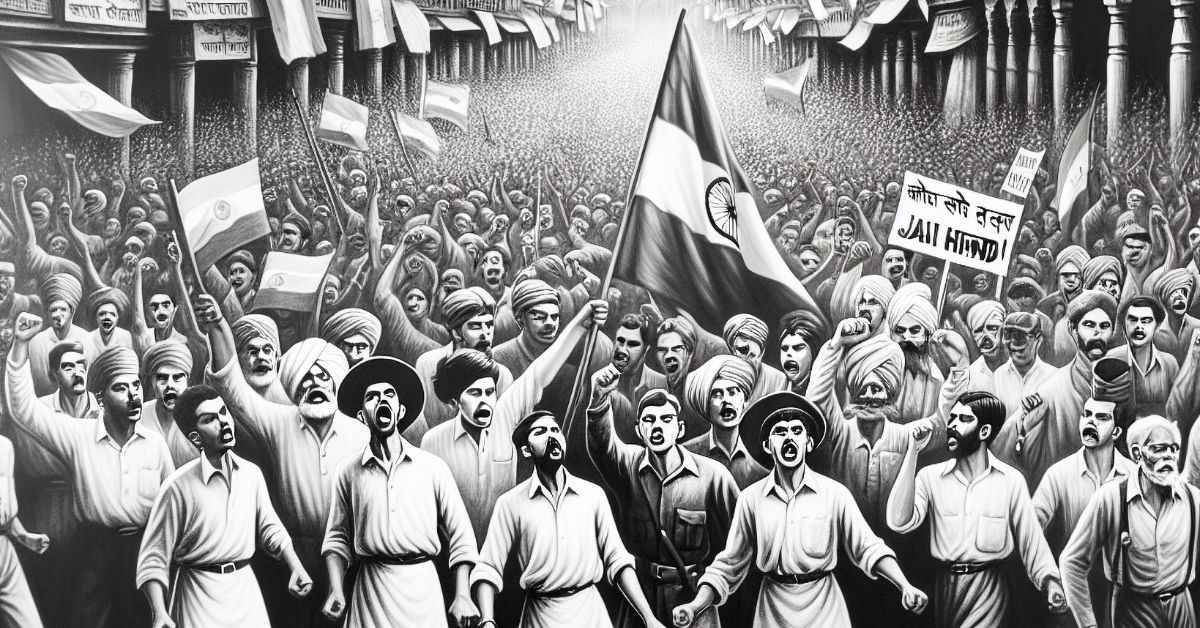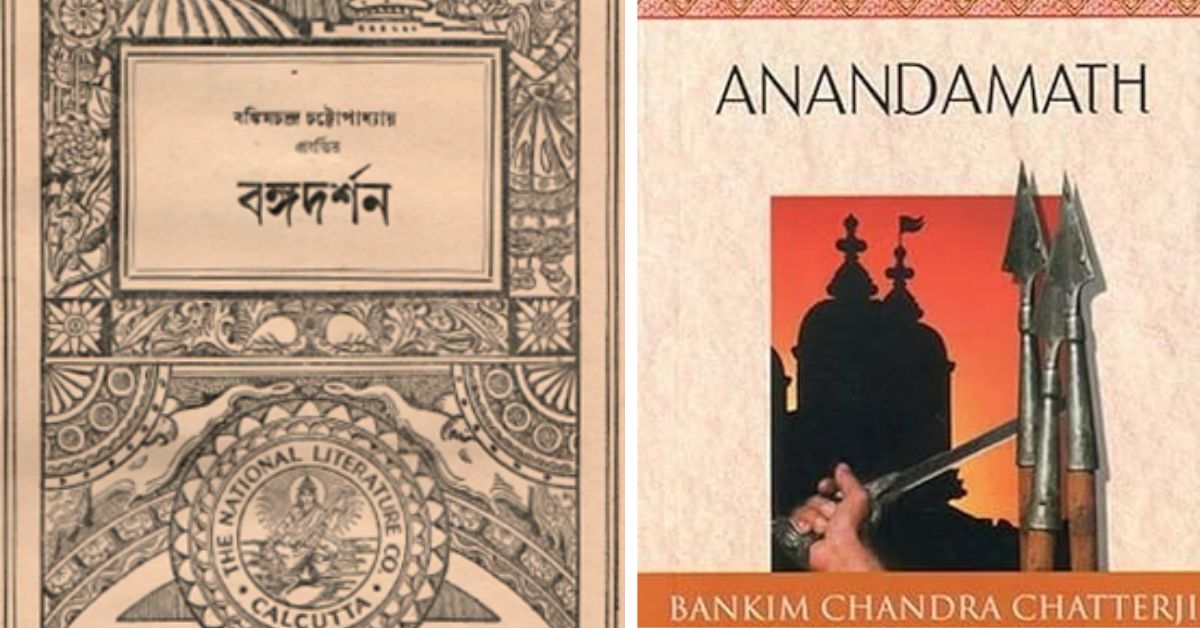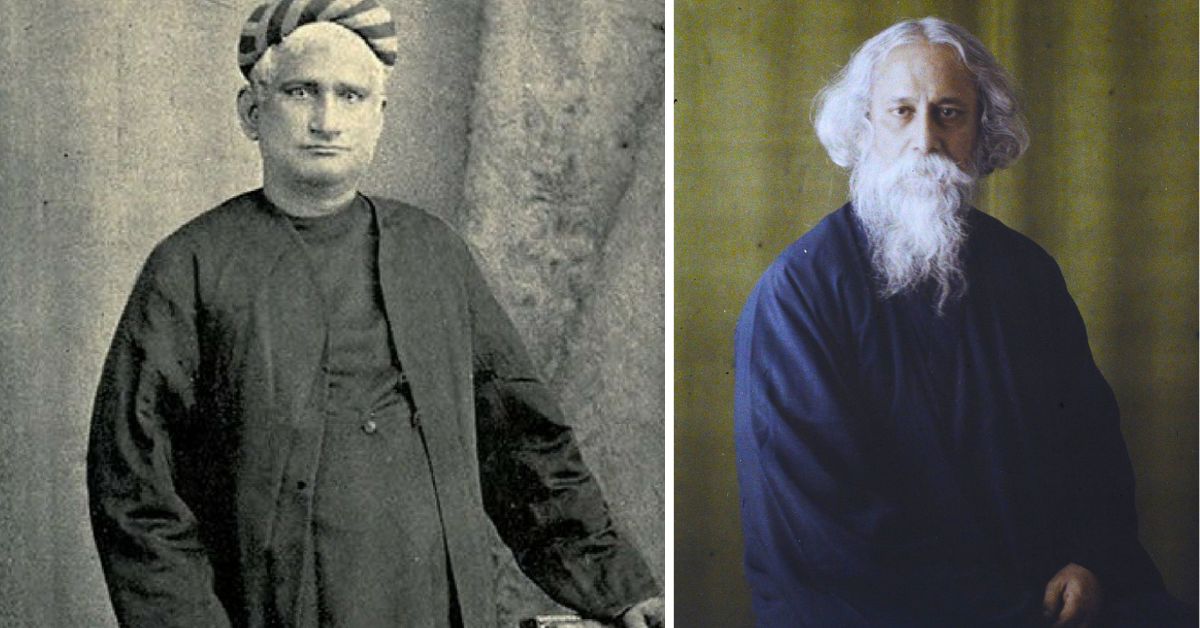The Story Behind Vande Mataram — The Song That Still Gives Us Goosebumps
During a session of the Indian National Congress in 1896, Rabindranath Tagore hummed a tune that he had composed; in time, the song ‘Vande Mataram’ assumed the status of India’s freedom anthem, and ever since it has reverberated across the annals of India’s history. Tagore’s stint marked the emergence of the song from its hiding place within the folds of a novel penned by Indian novelist Bankim Chandra Chattopadhyay.
Its story is splattered across the pages of history; its roots lie in the Partition of Bengal.
 The song Vande Mataram was born out of wanting to raise a voice against the unjust colonial practices in India
The song Vande Mataram was born out of wanting to raise a voice against the unjust colonial practices in India
A nationalist at heart, Bankim Chandra Chattopadhyay found his calling in writing after years of studying law and working for the government as a deputy collector of Jessore. He was following in his father’s footsteps; Chandra Chattopadhyaya had served as the deputy collector of Midnapur.
Born on June 27, 1838, in a village in Bengal’s North 24 Parganas, Bankim was a devoted student with a stellar academic record at the Hooghly Mohsin College and Calcutta’s Presidency College, where he studied.
His journey from a sarkar (government) employee to wielding the power of his pen was instigated by the colonial injustice he was privy to in Jessore. These feelings of patriotism found expression in the Bangadarshan, a monthly literary magazine, which Bankim Chandra started in 1872.
 Bangadarshan (L) was a monthly literary magazine while Anandamath (R) was a novel; both were launched by Bankim Chandra Chattopadhyay
Bangadarshan (L) was a monthly literary magazine while Anandamath (R) was a novel; both were launched by Bankim Chandra Chattopadhyay
The magazine amassed a great fan following, including the likes of Rabindranath Tagore. This fuelled Bankim’s next endeavour – Anandamath, a novel that he started in 1882. Among the pieces of writing in this novel was a poem whose words now decorate the stanzas of the eponymous Vande Mataram.
While the exact incident that triggered Bankim Chandra to pen this poem isn’t ascertained, there are anecdotal theories. While serving as the deputy collector of Murshidabad district, and stationed in Berhampore, one day, while returning from work, Bankim Chandra’s palanquin disrupted a game of cricket where a British officer, Colonel Duffin, was playing.
Duffin was enraged at his game being interrupted. The two had an altercation that was taken to court and culminated in a victory for Bankim, with Duffin being ordered to issue him a public apology.
 Bankim Chandra Chattopadhyay (L) and Rabindranath Tagore (R) are the legends behind the composition of Vande Mataram
Bankim Chandra Chattopadhyay (L) and Rabindranath Tagore (R) are the legends behind the composition of Vande Mataram
While the verity of this story is not known, it’s widely acknowledged that colonial injustice and its corollary practices provoked Bankim’s literary work. He passed away in 1894, but his legacy lived on in the form of the poem he penned. And Tagore, who lent it its tune — also the only person to compose the national anthems of two countries, India and Bangladesh, — recorded the song in his own voice in 1904.
It suffices to say that every time the song is sung, it leaves Indians with an aftertaste of hope and a reminder of the struggles that are etched in the country’s history.
The song was sung by Rabindranath Tagore as he led revolutionary marches. It also became the title of Indian poet Aurobindo Ghosh’s nationalist magazine, and in 1950, it was designated India’s national song by the Constituent Assembly led by Rajendra Prasad. The song was acclaimed by Mahatma Gandhi as a “powerful battle cry”.
Gandhi wrote in the magazine Harijan in July 1939, “No matter what its source was, and how and when it was composed, had become a most powerful battle cry among Hindus and Musalmans of Bengal during the Partition days. It was an anti-imperialist cry. As a lad, when I knew nothing of ‘Ananda math’ or even Bankim, its immortal author, Vande Mataram had gripped me. And when I first heard it sung, it had enthralled me. I associated the purest national spirit with it. It never occurred to me that it was a Hindu song or meant only for Hindus. Unfortunately, now we have fallen on evil days…”
Vande Mataram stands as a powerful reflection of India’s intricate struggle for independence—an emblem of resistance.
Edited by Vidya Gowri Venkatesh
Sources
News